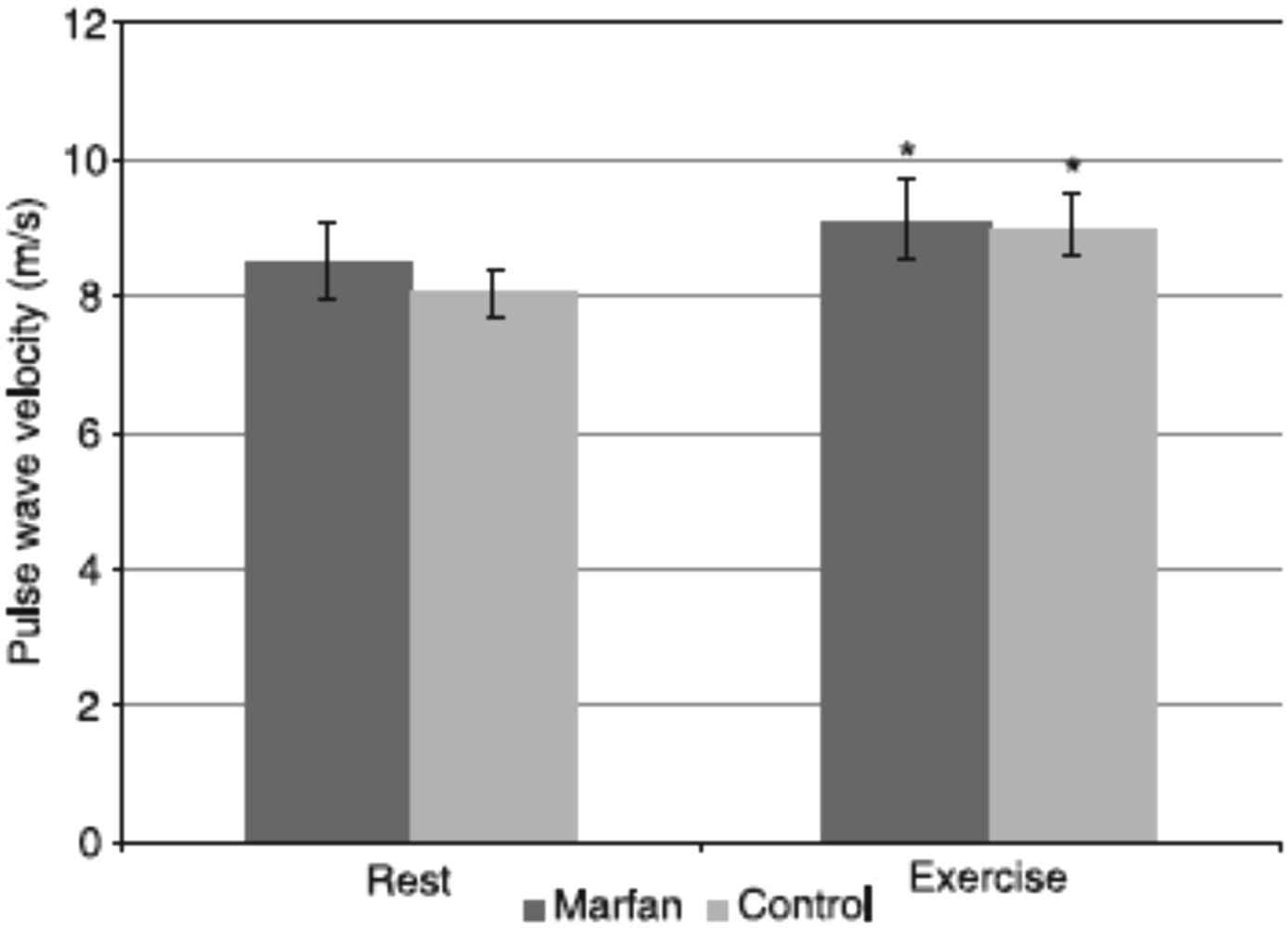P4.53 IMMEDIATE EFFECTS OF SUBMAXIMAL EFFORT ON PULSE WAVE VELOCITY IN PATIENTS WITH MARFAN SYNDROME
- DOI
- 10.1016/j.artres.2012.09.200How to use a DOI?
- Open Access
- This is an open access article distributed under the CC BY-NC license.
Marfan syndrome (MS) is a dominant autosomal disease caused by mutations in chromosome 15, the locus controlling fibrillin 1 synthesis, and may exhibit skeletal, ocular, cardiovascular, and other manifestations. Pulse wave velocity (PWV) is used to measure arterial elasticity and stiffness and is related to the elastic properties of the vascular wall. Since the practice of exercise is limited in MS patients, it was of interest to analyze the acute effect of submaximal exercise on aortic distensibility using PWV and other hemodynamic variables in patients with MS with either mild or no aortic dilatation. PWV and physiological variables were evaluated before and after submaximal exercise in 33 patients with MS and 18 controls. PWV was 8.51 ± 0.58 at rest and 9.10 ± 0.63 m/s at the end of exercise (P = 0.002) in the group with MS and 8.07 ± 0.35 and 8.98 ± 0.56 m/s in the control group, respectively (P = 0.004). Comparative group analysis regarding PWV at rest and at the end of exercise revealed no statistically significant differences. The same was true for the group that used β-blockers and the one that did not. The final heart rate was 10% higher in the control group than in the MS group (P = 0.01). Final systolic arterial pressure was higher in the control group (P = 0.02). PWV in MS patients with mild or no aortic dilatation did not differ from the control group after submaximal effort.
| Marfan (N = 33) | Control (N = 18) | |
|---|---|---|
| Age (years) | 19 ± 8 | 20 ± 5 |
| Weight (kg) | 60.9 ± 12.6 | 62.4 ± 11.9 |
| Height (m) | 1.78 ± 0.10* | 1.71 ± 0.10 |
| BMI (kg/m2) | 19.32 ± 3.93 | 21.28 ± 2.63 |
| ECHO (mm) | 33 ± 7* | 28 ± 2 |
Data are reported as means ± SD. BMI = body mass index; ECHO = echocardiogram.
P ≤ 0.05 compared to control group (t-test).
Anthropometric and echocardiographic data of patients with Marfan syndrome and controls.

Pulse wave velocity values at rest and at the end of exercise for the patients with Marfan syndrome (N = 33) and for the control group (N = 18). Data are reported as absolute vales. *P < 0.05 compared to rest (t-test).
Cite this article
TY - JOUR AU - P. Peres AU - G.F. Bernardelli AU - C.C. Mendes AU - S.S.C.P.M. Fischer AU - D.M. Servantes AU - W.M. Medeiros AU - A.C. Carvalho PY - 2012 DA - 2012/11/17 TI - P4.53 IMMEDIATE EFFECTS OF SUBMAXIMAL EFFORT ON PULSE WAVE VELOCITY IN PATIENTS WITH MARFAN SYNDROME JO - Artery Research SP - 197 EP - 198 VL - 6 IS - 4 SN - 1876-4401 UR - https://doi.org/10.1016/j.artres.2012.09.200 DO - 10.1016/j.artres.2012.09.200 ID - Peres2012 ER -
